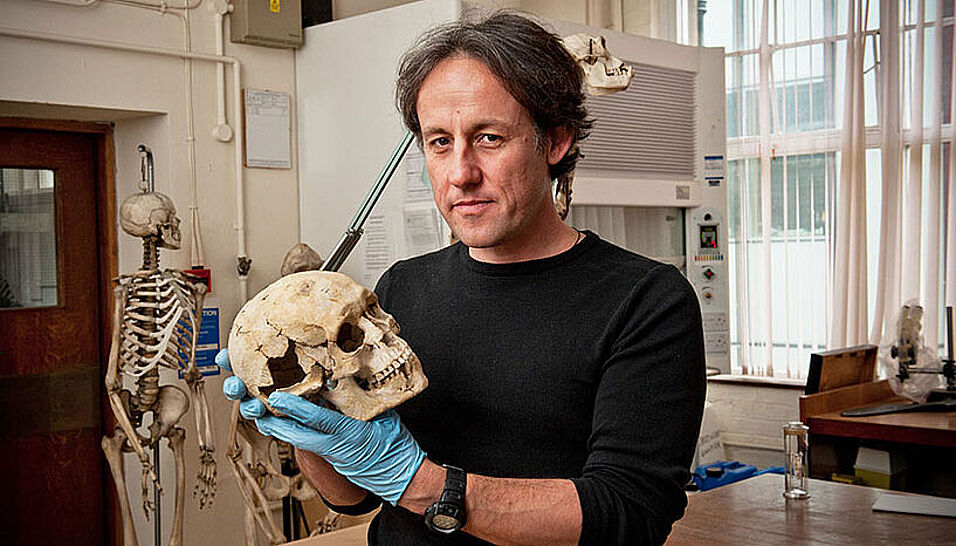Neanderthals and modern humans were living in close succession in the French Rhone Valley - about 10,000 years earlier than previously thought possible. This finding, which rewrites the settlement history of Western Europe, is reported by a team with participation of Tom Higham from the University of Vienna in the journal "Science Advances". According to the study, modern humans were already living there around 54,000 years ago, but only for about 40 years.
Neanderthals cleared the field much more slowly than assumed
The research team led by Ludovic Slimak of the University of Toulouse (France) analyzed the traces of settlement in the Grotte Mandrin, a semi-cave in southern France. This early settlement site was researched in a project spanning more than 30 years. The dating of the findings, which included tooth remains as well as stone tools, was led by Tom Higham of the Department of Evolutionary Anthropology at the University of Vienna.
The dating revealed that there was some sort of outlier in the layers of remains: finds in "Layer E" at the Mandrin Cave held a surprise that contradicts previous assumptions about the replacement of Neanderthal as the dominant hominid species in Western Europe.
More complex process than previously assumed
In fact, except for a few clues in Greece that do not fit the picture, scientists assume that modern humans did not reach Europe until between 43,000 and 45,000 years ago. Subsequently, a combination of the presence of Homo sapiens and changing environmental conditions may have led to the disappearance of early non-sapiens human species. Indeed, the last evidence of Neanderthals in Europe disappears around 40,000 years ago. This led to the assumption that the arrival of modern man from outside of Europe, led more or less directly to the disappearance of Neanderthals.
New analyses from the French cave, however, give strong indications that the process may have been more complex, because said "layer E" contained evidence of a Homo sapiens presence - embedded between layers that were clearly Neanderthal. Using state-of-the-art methods, scientists now dated the layer containing artifacts of modern humans to between 56,800 and 51,700 years ago. The most probable age of 54,000 years makes it the oldest evidence of Homo sapiens in Europe ever. This is 10,000 to 12,000 years older than the oldest previously found remains in Western Europe, say the study's lead authors in a joint release.
Neanderthals returned
This particular layer is also dominated by stone tools that are more finely crafted than in the deposits before and after it. Moreover, there is evidence of bows and arrowheads - a technology that had not been suspected in Neanderthals. Finally, a tooth from a modern human in this layer supports the idea that those tools did not come from Neanderthals.
According to the scientists, we can assume that modern humans probably used the cave only for about 40 years as a base from which they explored the surrounding area. Before and after that, the place was again inhabited by Neanderthals. Subsequent evidence of Homo sapiens in the cave is then again only found about 10,000 years later - that is, at a much more expected time.
Technology exchange
The short period about 54,000 years ago when the differently crafted stone artifacts were found, shows, that there must have been a technology exchange with the Near East already at that time. Indeed, the tools resemble pieces found in what is now Lebanon.
All these findings fundamentally change the ideas about the settlement of the continent, the researchers say. It becomes clear "that Homo sapiens did not simply enter the continent and then displace Neanderthal man as quickly as originally believed. This also tells us that the idea of our immediate superiority is unlikely to be true", says Higham. For him, it seems more likely that there were several waves of colonization.
Ergo, the replacement of Neanderthal would have spanned more than 10,000 years, during which the groups were in relative proximity to each other. However, no evidence was found in the southern French cave for a transfer of cultural achievements between the people of that time. In fact, the groups are more likely to have lived alongside each other without much interaction.

